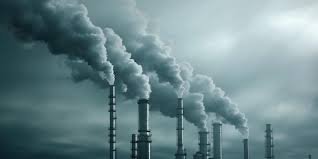
By Ameh Gabriel
A Global Crisis with Deadly Consequences
Air pollution is not just an environmental issue; it is a public health crisis. According to the World Health Organization (WHO), around seven million people die prematurely every year due to air pollution-related diseases, including lung cancer, stroke, and heart disease. In cities like Dhaka, Jakarta, and Mexico City, the thick blanket of smog is more than just an inconvenience it is a daily struggle for survival.
But amidst the gloom, there is hope. Activists, scientists, and concerned citizens are coming together to fight for the right to breathe clean air. Their weapons? Awareness campaigns, legal action, innovative technology, and pressure on governments to enforce stricter regulations.
Grassroots Movements: The Power of the People
In India, one of the most polluted countries in the world, activists like Sunita Narain have been leading efforts to push for stricter emission standards and cleaner fuel alternatives. Citizen-led groups such as “Let Me Breathe” use social media to document air pollution levels and pressure policymakers into action.
Meanwhile, in China, the “Blue Sky Warriors” have emerged a network of activists using real-time air quality monitoring data to expose industrial polluters who violate environmental laws. Their work has led to factory shutdowns and government crackdowns on illegal emissions.
Across Africa, young activists like Elizabeth Wathuti in Kenya are not only planting millions of trees to improve air quality but also pushing for laws that restrict deforestation and vehicle emissions. In Nigeria, grassroots organizations are fighting against the burning of toxic waste, a significant contributor to air pollution in cities like Lagos and Port Harcourt.
Technology as a Weapon Against Pollution
Technology is playing a crucial role in the fight for clean air. Low-cost air sensors, developed by organizations like AirVisual and OpenAQ, are giving people the power to monitor pollution levels in real-time. These devices help communities track pollution hotspots and demand action from local authorities.
In Europe, cities like London have introduced ultra-low emission zones (ULEZ), which charge high-polluting vehicles extra fees to drive within certain areas. This policy has significantly reduced nitrogen dioxide levels. Similar initiatives are being tested in Asian and South American cities.
Innovations like smog towers—giant structures designed to suck in polluted air and release cleaner air—are also gaining traction. The world’s largest smog tower in Xi’an, China, has already shown promising results in reducing airborne pollutants.
Holding Governments and Corporations Accountable
One of the most significant battles in the fight for clean air is holding those in power accountable. Many activists are using legal action to push for policy changes. For instance, in Pakistan, a young climate activist named Ahmad Rafay Alam successfully sued the government, leading to the creation of an environmental protection commission to tackle pollution in Lahore.
Global movements like Fridays for Future, spearheaded by Greta Thunberg, are putting pressure on world leaders to commit to cleaner energy sources. More companies are also being forced to adopt greener policies due to consumer demand and environmental lawsuits.
A Future with Cleaner Air?
The fight for clean air is far from over, but progress is being made. Awareness is growing, technology is improving, and more governments are starting to recognize the urgency of the crisis. However, real change requires collective effort—from individuals adopting sustainable habits to corporations reducing emissions and governments enforcing strict air quality laws.
The battle for clean air is not just about the environment; it is about human survival. Every breath counts, and as activists around the world continue their fight, they carry with them the hope of a future where clean air is not a privilege, but a right for all.








